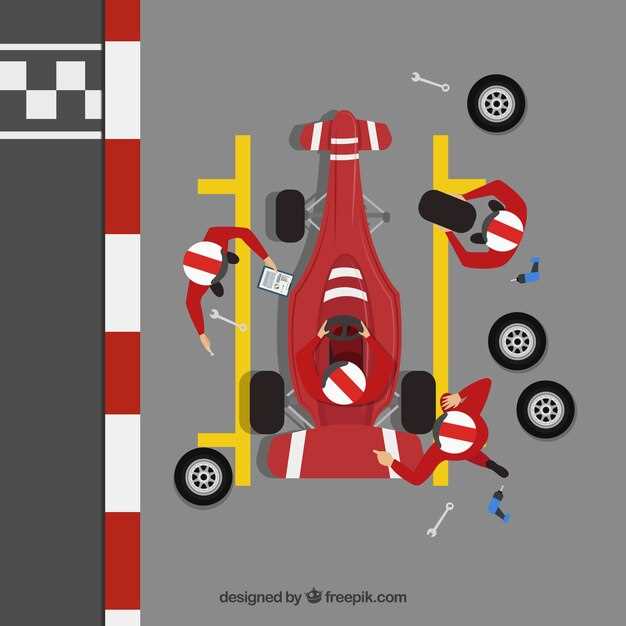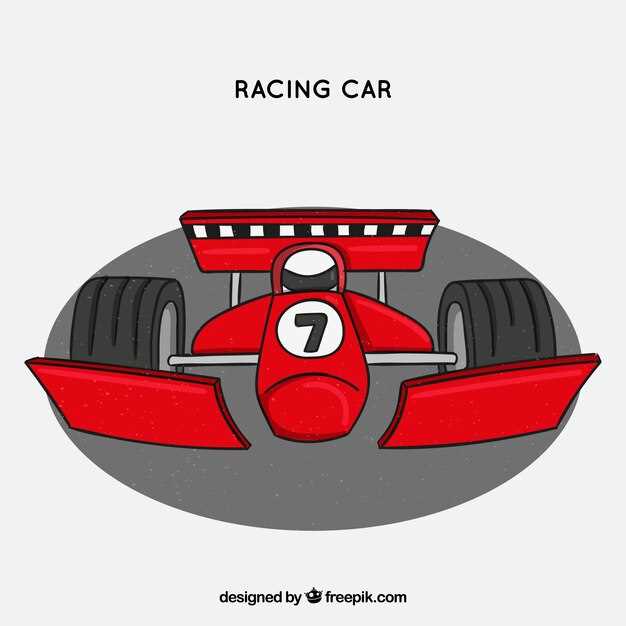
Formula One cars represent the pinnacle of automotive engineering, seamlessly blending cutting-edge technology with high-performance capabilities. Among the myriad factors that define these vehicles, aerodynamics plays a crucial role in determining their efficiency and speed on the track. The unique design elements crafted for optimal airflow not only enhance the car’s stability but also significantly reduce drag, allowing drivers to achieve unprecedented velocities.
The importance of aerodynamics cannot be overstated, as it influences both the downforce and overall handling characteristics of a Formula One car. Engineers meticulously analyze air patterns using advanced simulations and wind tunnel tests to create components like streamlined wings, diffusers, and bargeboards. Each of these elements is designed to manipulate airflow in ways that maximize performance while adhering to strict regulatory frameworks.
In addition to aerodynamics, several other features contribute to the distinctiveness of Formula One cars. From cutting-edge hybrid power units to lightweight materials such as carbon fiber, every aspect is tailored to enhance speed, efficiency, and safety. Understanding these key characteristics offers a glimpse into the extraordinary world of Formula One, where innovation fuels competition and technical excellence defines success.
How Wing Design Affects Downforce and Speed in F1 Cars

The design of wings on Formula One cars plays a critical role in defining their aerodynamics, significantly impacting both downforce and speed. Wings are essential for creating the necessary aerodynamic forces to enhance the car’s grip on the track, allowing drivers to navigate corners at higher speeds.
Downforce is generated as air flows over and under the wing surfaces. The shape and angle of the wings, known as the angle of attack, determine how efficiently they produce this force. A higher angle of attack can increase downforce, but it can also lead to increased drag, which can slow the car down on straight sections. Thus, there is a delicate balance that engineers must achieve between maximizing downforce for cornering and minimizing drag for straight-line speed.
Front and rear wings are typically designed with specific profiles that influence their aerodynamic characteristics. Front wings can be adjusted to optimize airflow around the car and enhance the performance of the rear wing. Additionally, the materials used in the wing construction allow them to maintain stability and structural integrity at high speeds, an essential consideration given the extreme forces experienced on the track.
Mainstream wing designs have evolved significantly, with many teams experimenting with adjustable wings to adapt to varying circuit demands. This adjustability is crucial, particularly in qualifying sessions where teams seek to maximize aerodynamic efficiency for a single fast lap. Innovative designs, such as the use of endplates and vortex generators, further improve the airflow and reduce turbulence, ensuring that downforce remains consistent throughout different phases of a race.
In summary, effective wing design in Formula One is pivotal in optimizing downforce and speed. By manipulating aerodynamics through careful engineering, teams can enhance their vehicles’ overall performance, enabling them to achieve competitive advantages on the racetrack.
The Role of Body Shape in Reducing Air Resistance

The body shape of F1 cars is meticulously designed to minimize air resistance, a crucial factor for achieving high speeds. The streamlined contours allow air to flow smoothly over the vehicle’s surface, significantly decreasing drag. This aerodynamic efficiency not only enhances straight-line speed but also improves cornering stability.
F1 teams utilize advanced computational fluid dynamics (CFD) tools and wind tunnel testing to refine their car designs. These technologies help engineers visualize how air interacts with the car’s exterior, allowing for the optimization of every curve and angle. For example, the shape of the front wing is tailored to create downforce while reducing turbulence, contributing to better grip on the track.
The rear of the car is often tapered, which helps in guiding the airflow away from the vehicle, thus reducing the wake that contributes to drag. Additionally, the design includes features like diffusers and side pods that further manage airflow, enhancing overall aerodynamic performance. These elements work together to create a cohesive body shape that prioritizes speed and stability.
In conclusion, the role of body shape in reducing air resistance is fundamental to the performance of F1 cars. A carefully sculpted exterior not only maximizes speed but also provides the necessary downforce for maintaining control at high velocities, proving that every detail in the design process is critical to success on the racetrack.
Impact of Ground Effects on Car Stability and Performance
Ground effects in Formula One (F1) cars significantly enhance their aerodynamic efficiency by generating downforce. This downforce improves traction and cornering speeds, allowing drivers to navigate turns at higher velocities. The fundamental principle behind ground effects is the creation of a high-speed airflow underneath the car, which lowers pressure and effectively ‘suction’ the vehicle to the track.
One of the key components to utilize ground effects is the shape and design of the car’s floor. Innovative designs such as venturi tunnels and diffusers play crucial roles in directing airflow. These features enable the car to maintain a balance between downforce and drag, optimizing performance on straights as well as through curves.
The impact on stability is multifaceted. Enhanced downforce due to ground effects allows F1 cars to remain firmly planted during high-speed maneuvers. This increased stability reduces the risk of losing grip, which is crucial for maintaining control during races. However, it also introduces challenges; if a car encounters irregularities on the track or turbulence from another vehicle, the sudden changes in airflow can disrupt ground effect, potentially leading to a loss of control.
Moreover, the reliance on ground effects changes the dynamic of setup and tire management. Teams must meticulously balance the car’s aerodynamics and suspension to optimize the use of downforce while preventing oversteer or understeer. As a result, drivers experience a unique feedback mechanism where the car’s responsiveness is closely tied to the ground effect conditions.
In summary, the influence of ground effects on F1 car stability and performance cannot be overstated. It allows for unprecedented levels of grip and cornering agility, giving teams and drivers a competitive edge. However, navigating the complexities of ground effect technology requires careful engineering and skillful driving to maximize its benefits on race day.




